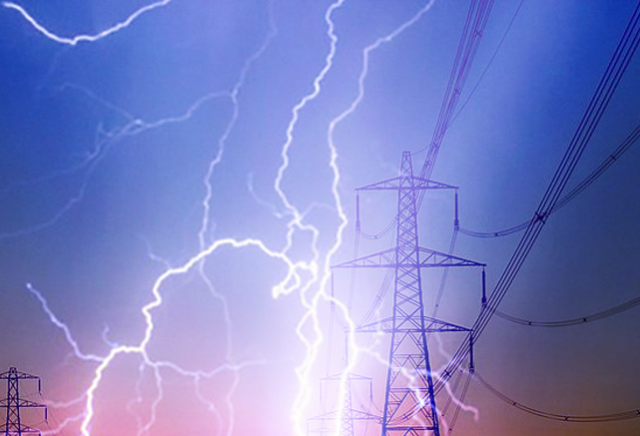Overvoltages are unwanted potentials occurring in electrical systems between a phase conductor and the earth or ground, or between phase conductors having a peak value greater than the peak of the largest nominal or RMS voltage of the system. In simple terms, on a 240 volts system, the peak value of voltage is equal to square root of two (2) times the nominal phase voltage value.
Between Phase and Ground


Between Phases



At this voltage level, any voltage magnitude above the aforementioned values will be considered to be an overvoltage.
Overvoltages can be triggered by atmospheric lightning discharges considered as external, or by a rapid change of system conditions (i.e. ground faults, switching operations, large equipment being turned off, etc.) are considered as internal.
Ground faults may cause internal temporary overvoltages. Overvoltages exceeding the dielectric capability of the electrical equipment insulation may cause premature insulation failure. Heat produced during the fault may cause the escalation of the damage, unless the supply of electric current is promptly interrupted. Excessive voltage stress caused by overvoltages can create hazards for persons by triggering fires and explosions.
The lightning current through the down-conductors connecting the lightning protection system (LPS) to the ground electrode creates magnetic fields. Overvoltages will be induced in any adjacent metal structures. If the induced overvoltages exceed the impulse withstand capability of the separation means between the down-conductor and the metal structure, a side flash may occur which can trigger fire or ignite explosion.
Beside the issues of overvoltages on electrical equipment, safety of personnel is of utmost importance. Overvoltages pose safety issues to personnel by increased touch voltages. Effective grounding system compliant to international standards will considerably reduce overvoltages leading to reduced touch voltages
Use of shielding conductors and surge protection devices likewise contribute to the mitigation of overvoltages.
Below is a summary of the category and causes of system overvoltages.
| Category | Description | Causes |
|---|---|---|
| Power frequency overvoltages | Temporary overvoltages dominated by the power frequency component | * Electric faults * Sudden changes of load * Ferroresonance |
| Switching overvoltages | Temporary overvoltages resulting from switching operation | * Energization of lines * Deenergization of capacitor banks * Fault interruption/TRV * High-speed reclosing * Energization/de-energization of transformers |
| Lightning overvoltages | Temporary overvoltages resulting from a lightning stroke terminating at a phase conductor, shield conductor, any other part of a power system, or a nearby object (tree, etc.) | Lightning—cloud-to-ground flashes |
Electric faults
Sudden changes of load
Ferroresonance
References:
- Electrical Safety of Low-Voltage Systems
Dr. Massimo A. G. Mitolo
McGraw-Hill Companies, Inc. 2009
ISBN 978-0-07-150818-6 - Standard Handbook for Electrical Engineers
Copyright 2006, Donald Fink
McGraw-Hill Publishing
